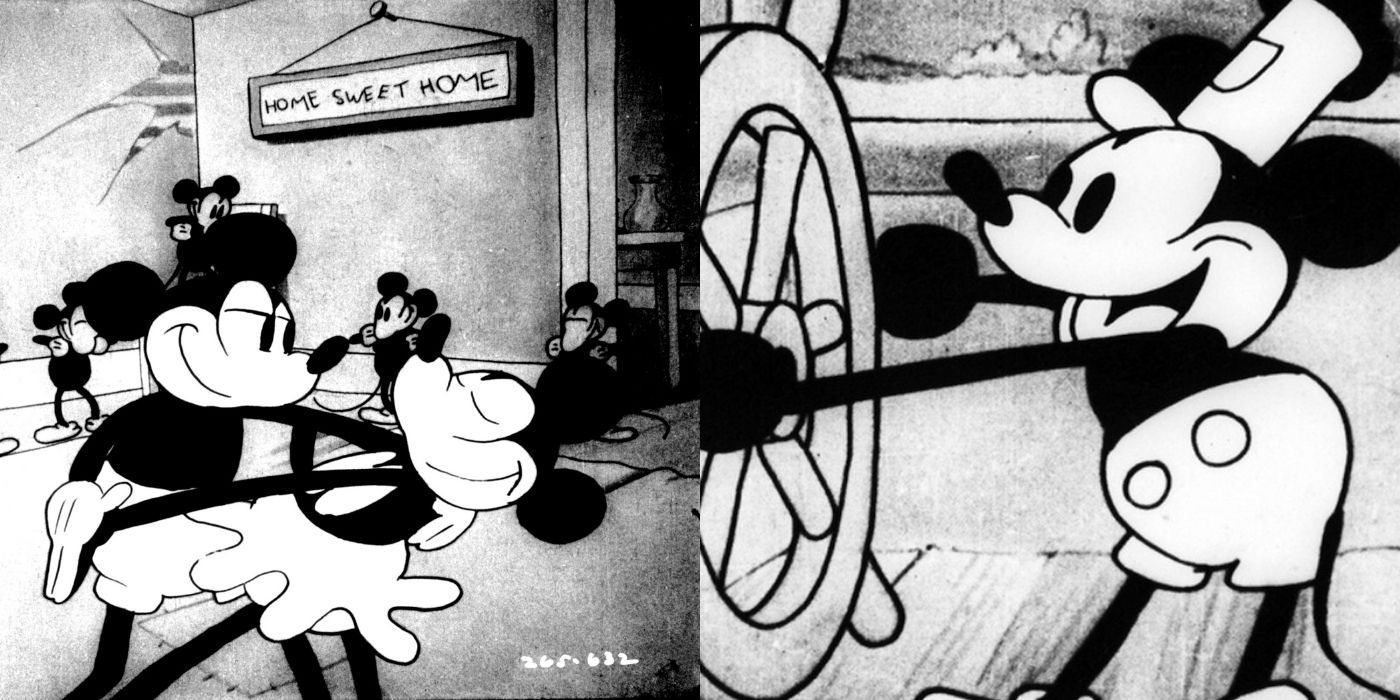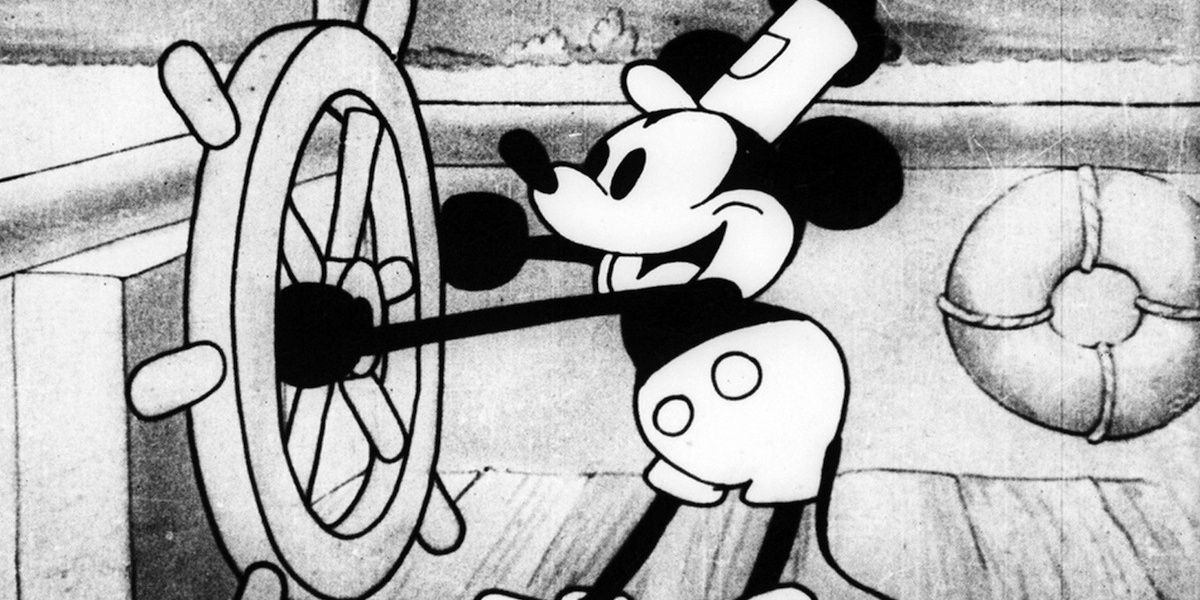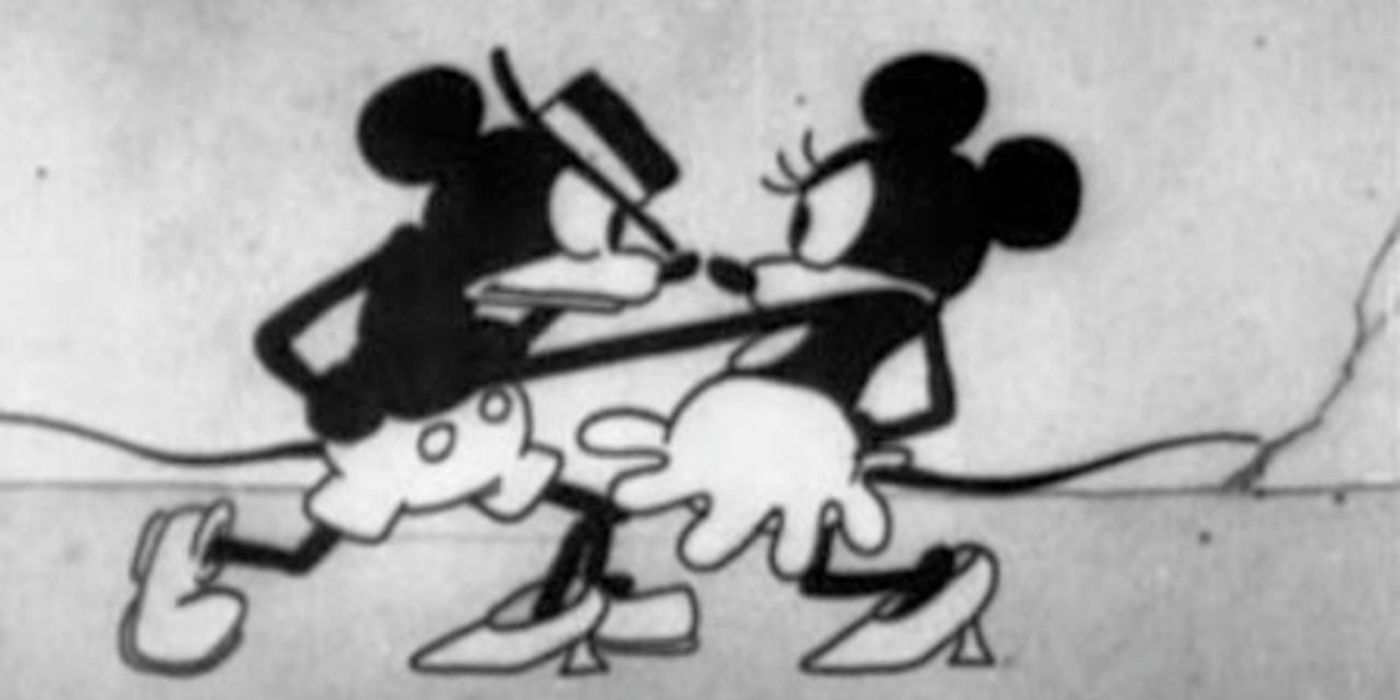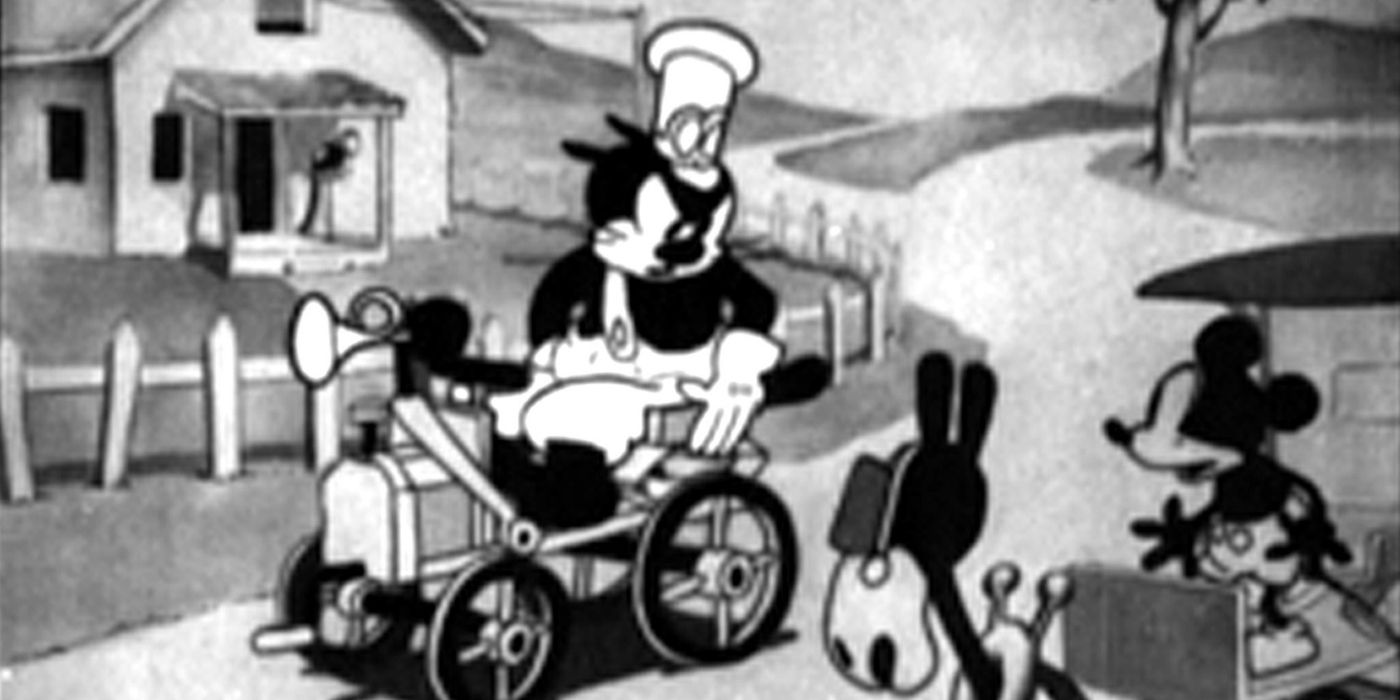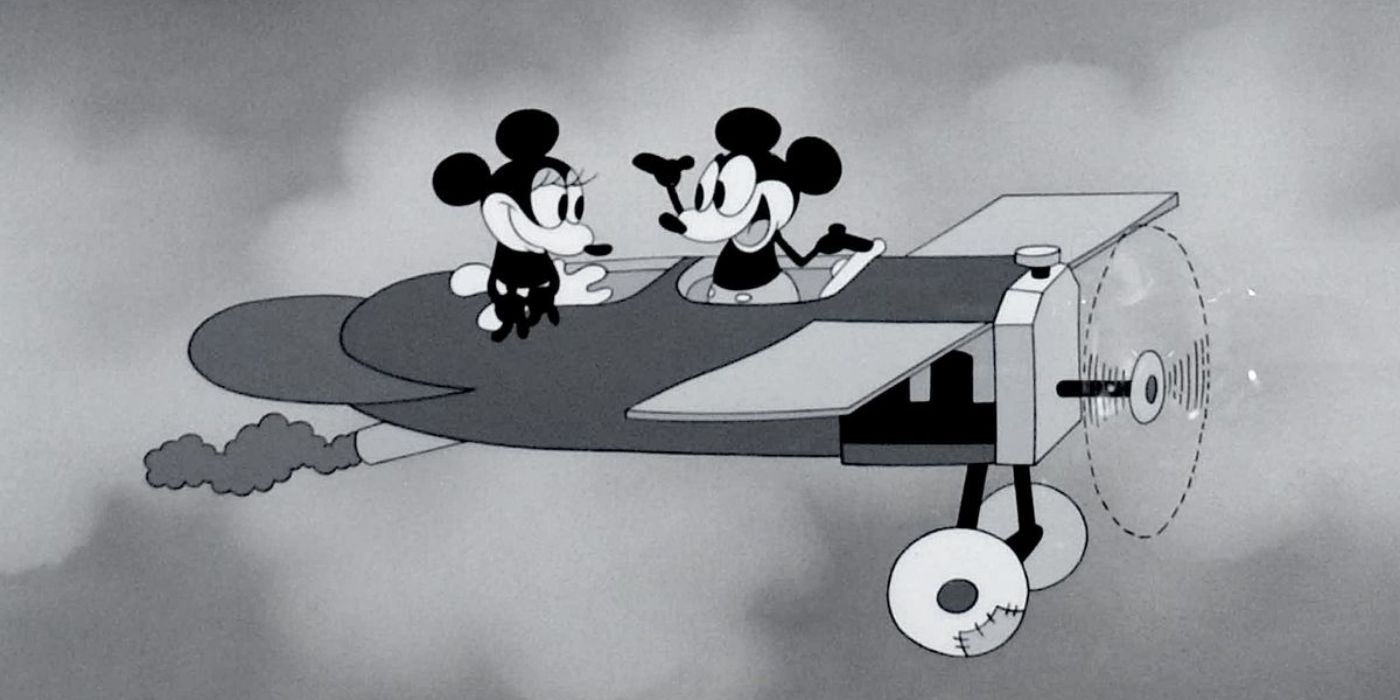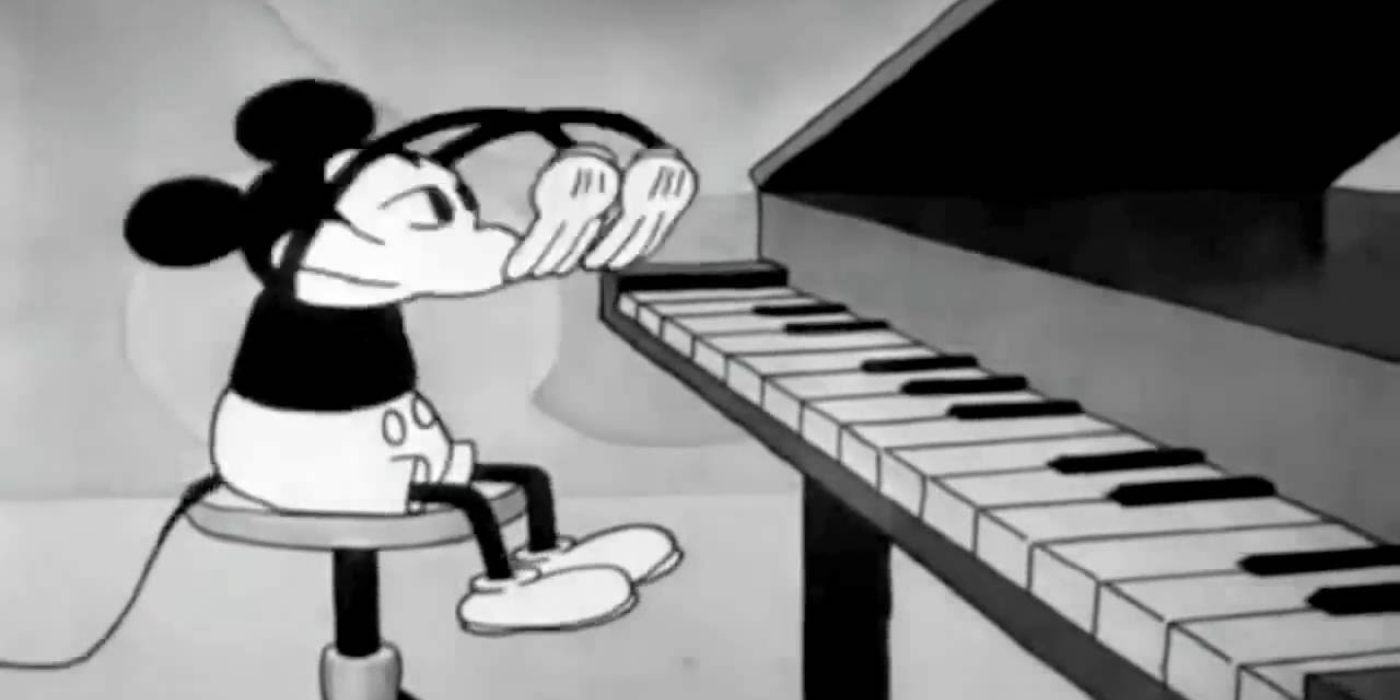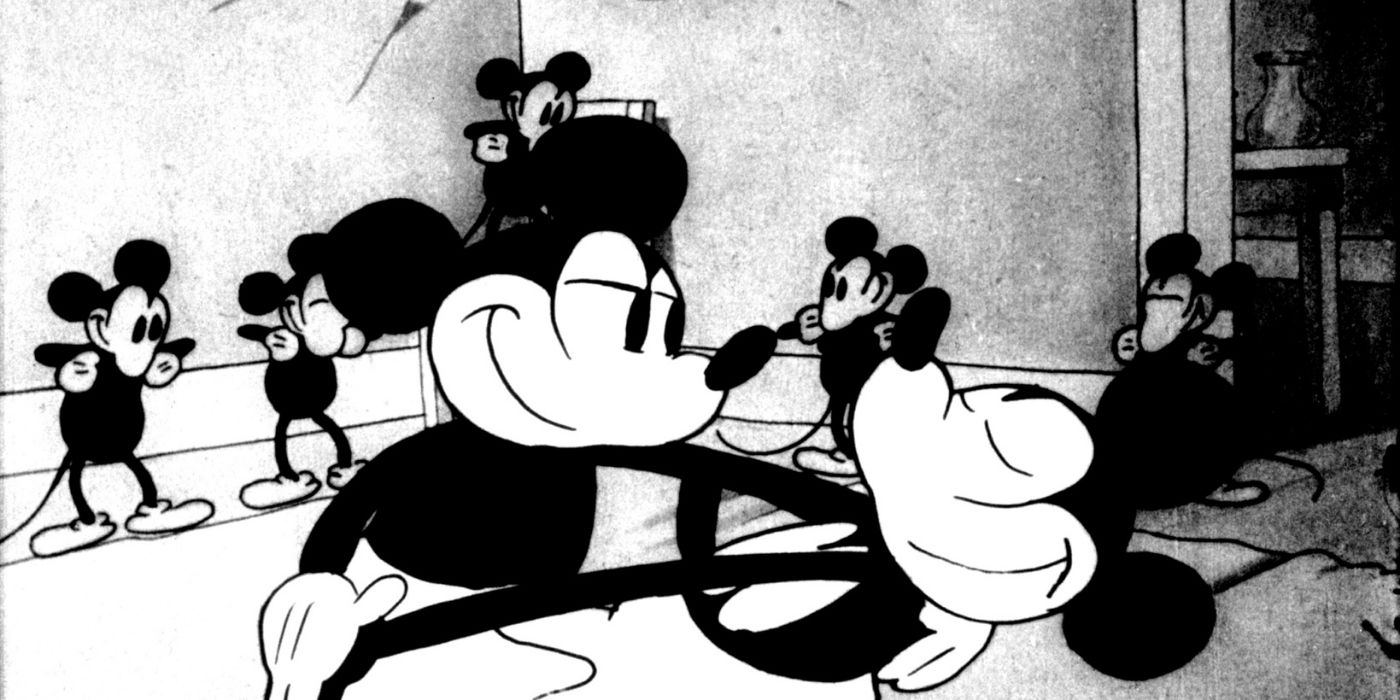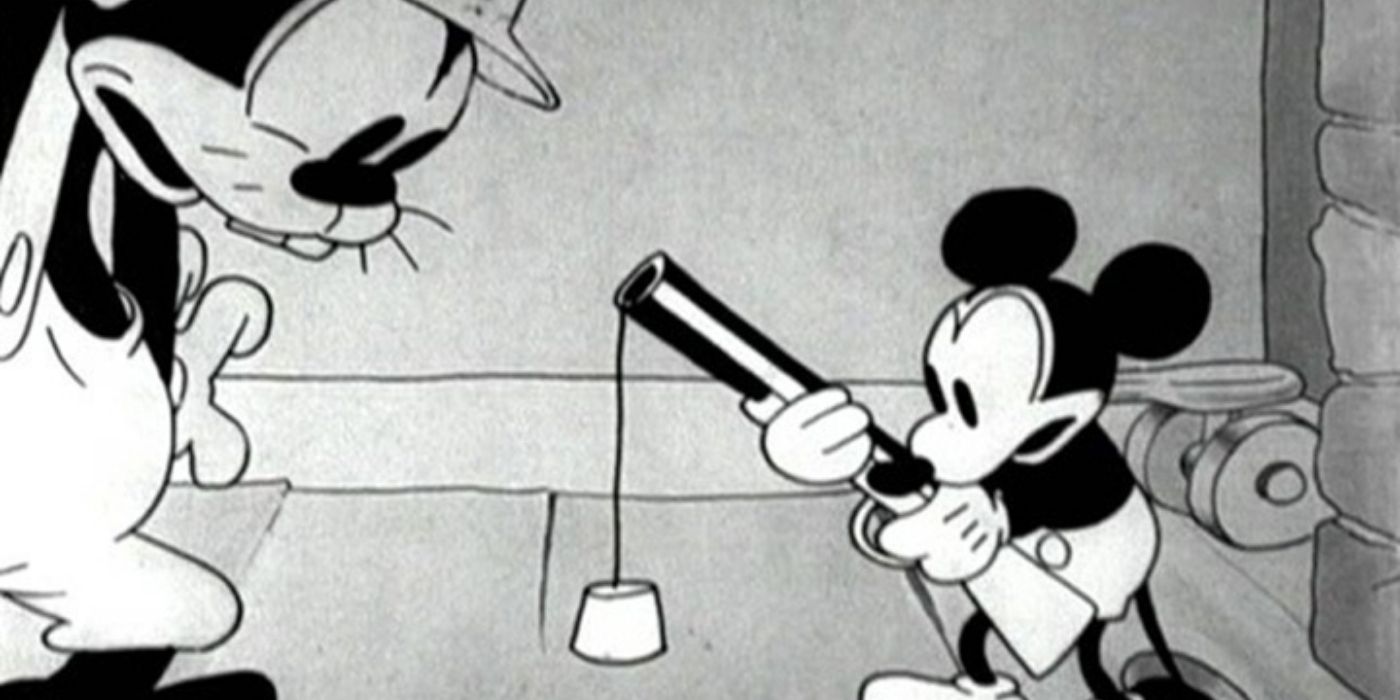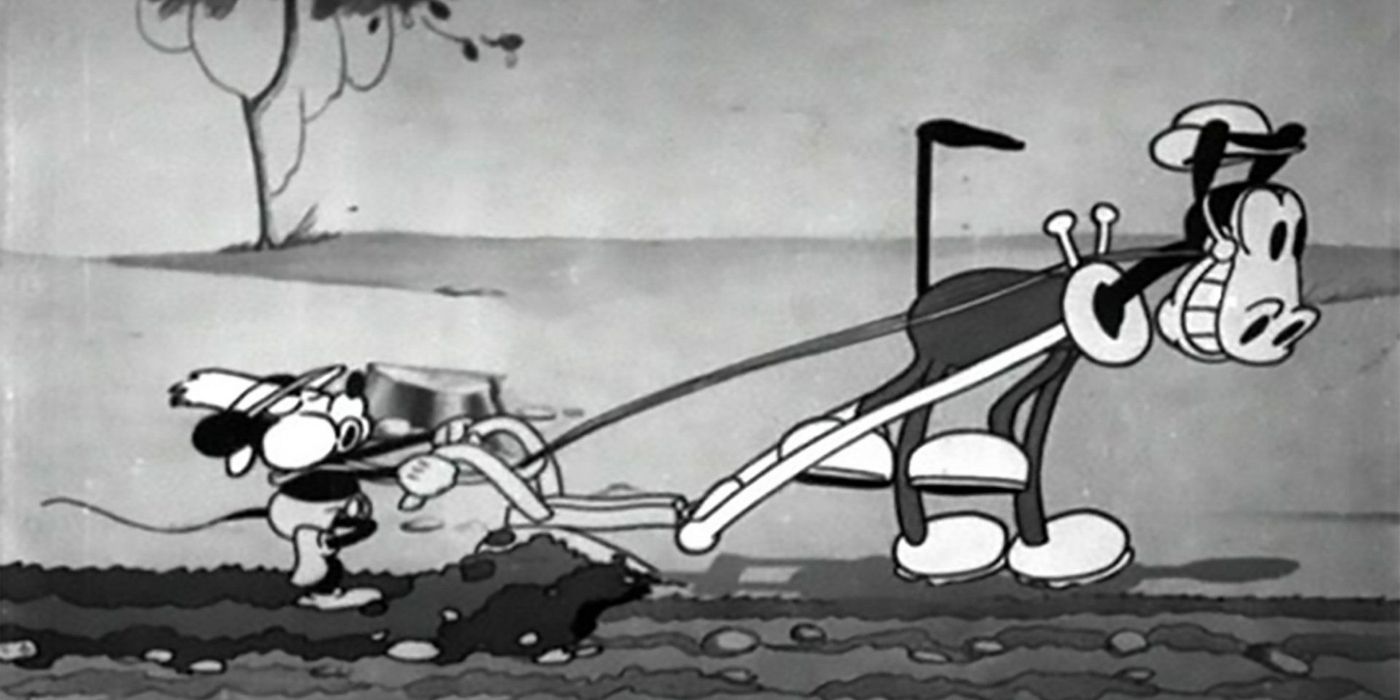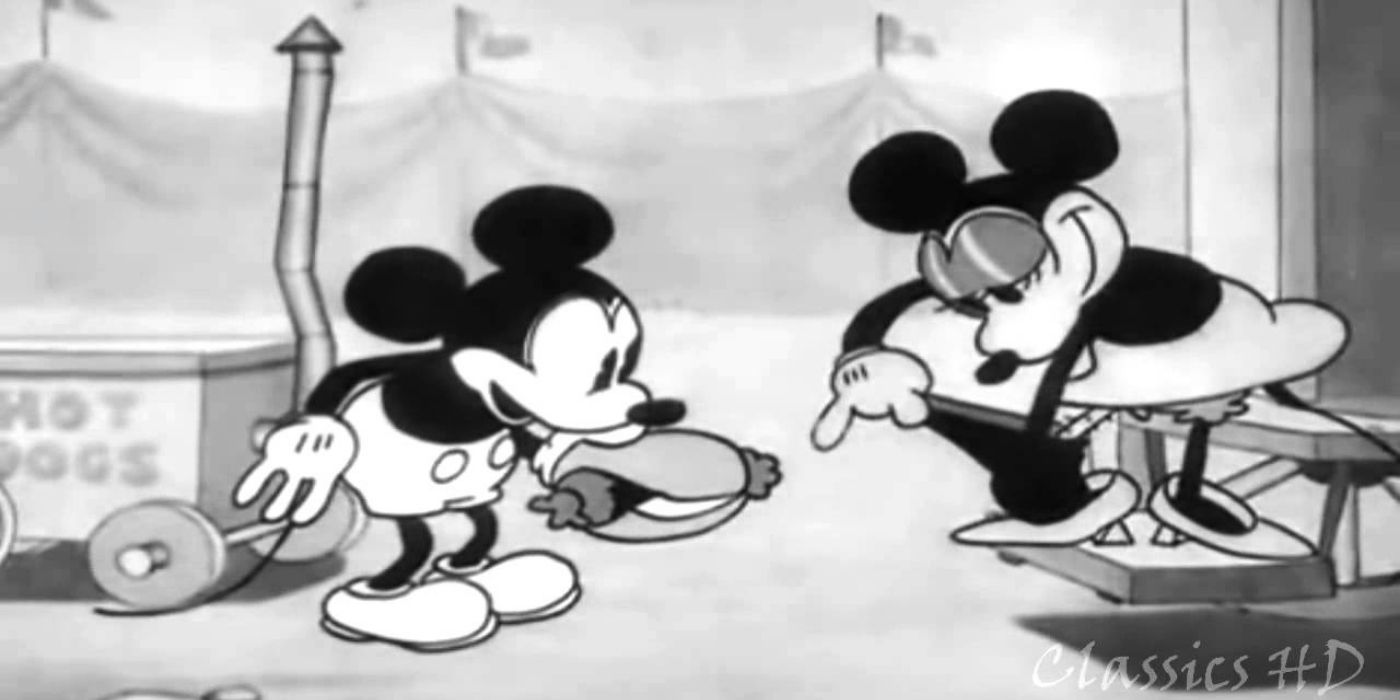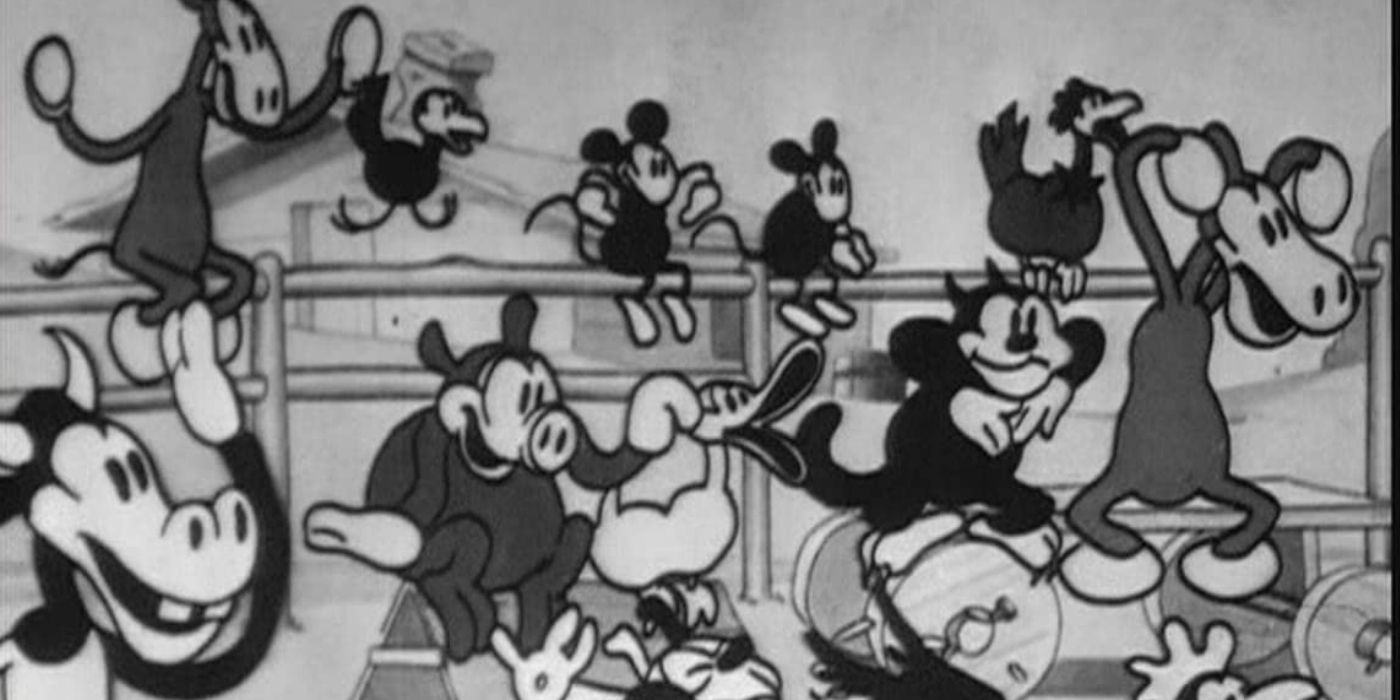In the history of animation, there are few characters that have managed to become as iconic of Mickey Mouse (though both Donald Duck and Goofy come close). For almost one hundred years, this little animated rodent has managed to entrance children of all ages. In fact, he’s become so iconic, and so associated with Disney, that it’s hard to imagine the famous animation studio without its first true superstar.
As ubiquitous as he is now, however, he had some rather humble beginnings, and his earliest cartoon appearances show a character very different in appearance, and sometimes in behavior, from the one that most people are familiar with today.
Steamboat Willie (1928)
This cartoon is, of course, the one where it all began. This is one of those animated shorts that has managed to become part of the film canon. It’s not hard to see why, since it would be the first of many cartoons featuring Mickey. It’s a rather simple film from today’s perspective, but it’s important to remember that it broke many boundaries when it was first released, and it would become a crucial part of Walt Disney’s efforts to show that animation could in fact be an art form.
The Gallopin’ Gaucho (1928)
Mickey might be famous now, but during the 1920s he was still very much a newcomer on the film scene. Thus, it’s not surprising that many of his earliest appearances would show him in cartoons that were designed to imitate famous live-action films and stars. In this case, the animated short is meant to be a riff on the great Douglas Fairbanks, well-known for films in which he would engage in various acrobatic and physical antics. Even now, so many years later, it’s a charming little piece of animation.
The Barn Dance (1929)
Fans of Disney know that the only love of Mickey’s life is the charming and lovely Minnie, and her history with Disney is almost as long as her boyfriend’s.
In this case, the short brings Mickey and Minnie together with Peg-Leg Pete, who would go on to have a long history in Disney cartoons as an enemy of both Mickey and several other characters (as well as Goofy’s neighbor in a much-later television series).
Plane Crazy (1929)
As with so many of the other early Mickey cartoons, this one clearly draws on events currently happening in the world. In this case, it’s to the famed aviator Charles Lindbergh, whom Mickey is attempting to imitate in his own efforts to fly the airplane. It has to be said, though, that there are some rougher edges to Mickey’s character in this cartoon, and he really doesn’t seem to appreciate that Minnie isn’t interested in his romantic overtures.
The Opry House (1929)
These days, there’s a very fixed image of what Mickey Mouse is supposed to look like, and that includes his signature white gloves (in fact, it would be more than a little weird to think of him without them). This short film is the first time that they appear with the character. This short certainly has its charms, as shows Mickey adopting a variety of personalities for his vaudeville show. However, as with so many other early cartoons, there are some elements of the humor that don’t age particularly well.
When The Cat’s Away (1929)
Most people who watch Disney cartoons featuring Mickey are used to seeing him appear in human size. However, in this early cartoon both he and Minnie are actually the size of regular mice, while their nemesis, Tom Cat (hardly an original name), is the size of a person. Needless to say, the two mice get into all sorts of hijinks. Especially noteworthy is the fact that at this stage of his development, Mickey was still being voiced by none other than Walt Disney himself.
The Barnyard Battle (1929)
One of the most noteworthy things about many of these early Mickey films is how mature they seem, particularly when compared to so many of his subsequent appearances. In this short, for example, Mickey is a soldier in an army of mice determined to fend off an attack by cats (led, of course, by Pete). There are some truly disturbing sequences in this particular animated short, which shows just how much animation has changed in the subsequent decades.
The Plowboy (1929)
Though Mickey was the first and most important of Disney’s creations, it wasn’t long before he was joined by other animated characters that would also become iconic in their own way. In this case, the viewer is introduced to the sidekick character who would later be named Horace Horsecollar (though in this short he’s basically just a farm animal).
And, as with so many of the other early shorts, Mickey has more than a little trouble getting Minnie to kiss him.
The Karnival Kid (1929)
Without a doubt, Disney was one of the most prolific animators of his generation. The man seemed to be something of a machine, churning out numerous shorts in a very small period of time. One of them is this short film, which is noteworthy for being the first film in which Mickey actually speaks (he’d merely made a variety of noises in the preceding shorts). It’s also worth pointing out that there are times when Mickey’s looks very strange, due to the difficulty in synchronizing dialogue and animation.
Mickey’s Follies (1929)
When watching these early Mickey Mouse cartoons, it’s important to keep in mind that, at this early stage, the films were as much about showing what animation could do as they were about the stories themselves. Thus, this is one of the weaker shorts in terms of narrative (since it focuses on a variety of animal escapades). What is especially notable about it, however, is that it showcases Mickey’s singing, a true marvel when one considers the difficulties inherent in synching dialogue and animation.

